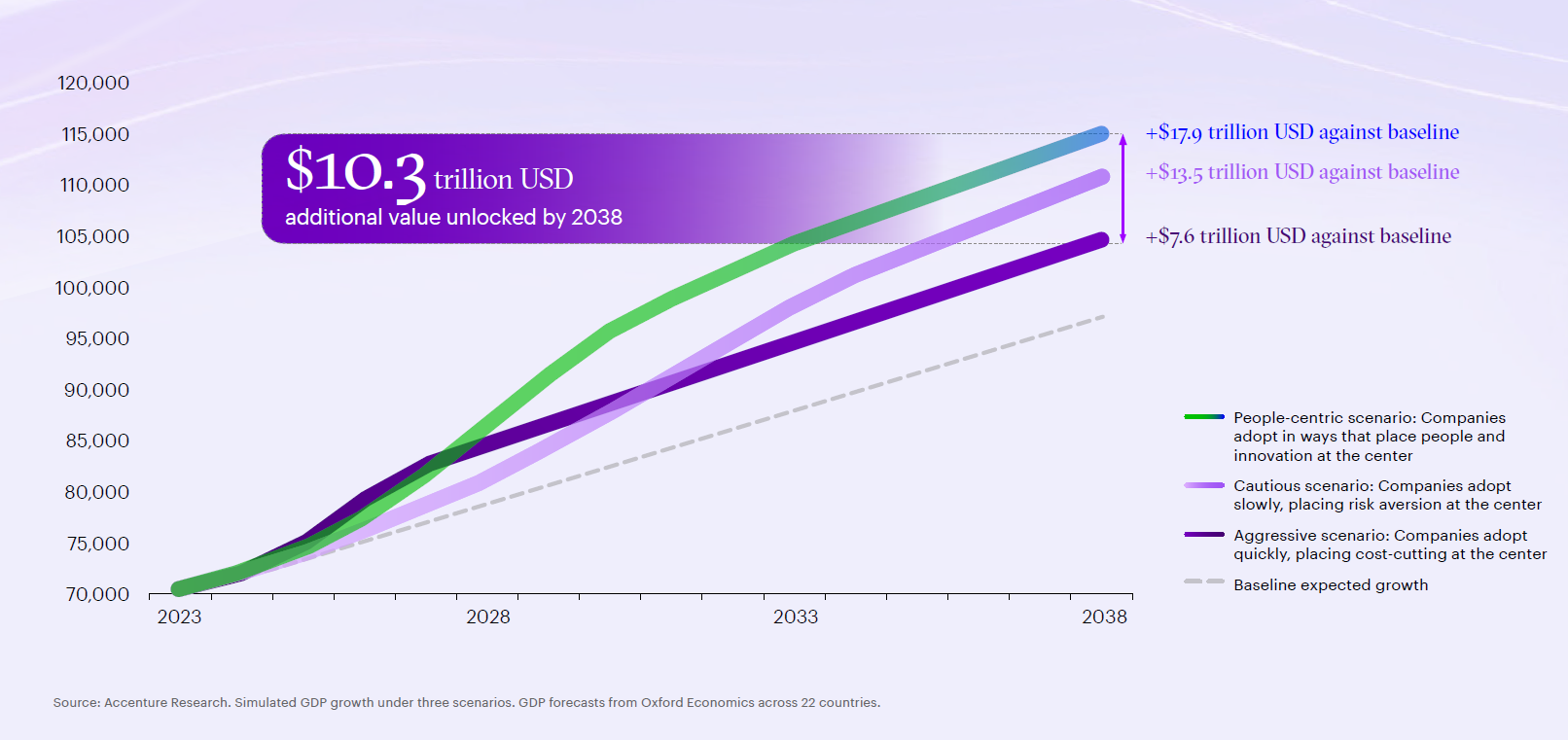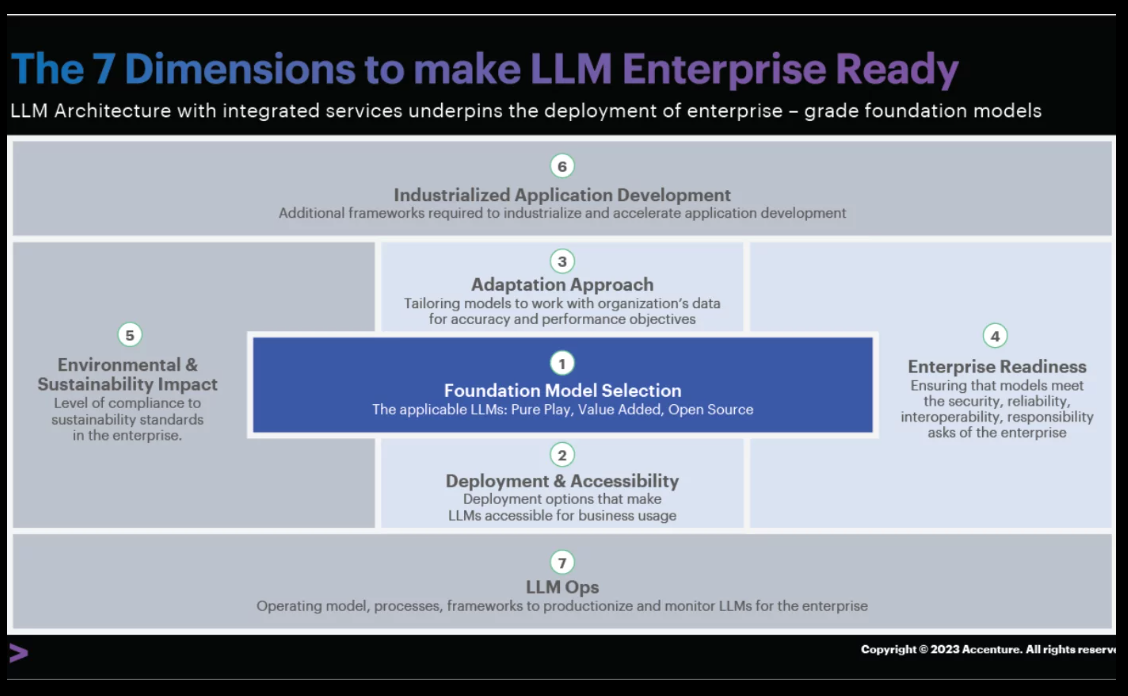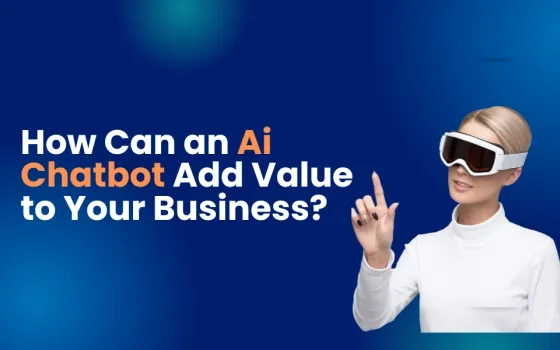Summary
Generative artificial intelligence (AI) has created an inflection point for consumer goods, services and retail (CGSR) companies, simultaneously driving the need for reinvention while providing powerful new capabilities to enable it. As this transformative technology reshapes industry landscapes and consumer expectations, CGSR organizations must embrace total enterprise reinvention (TER) – leveraging generative AI itself to accelerate the very transformation it necessitates.
Global Capability Centers (GCCs) in India have been a key part of CGSR company strategies. They have helped accelerate digital transformation, drive cost benefits and provide access to world-class talent. The 1,400-plus GCCs in India employ 3.2 million people, generate over $100 billion in revenue and support their parent enterprises across four key areas:
- Business service operations
- Enterprise functions
- Digital and technology services
- Data and analytics services
As generative AI radically transforms each of these areas, GCCs must reinvent their service delivery models. Moreover, they can serve as engines for enterprise reinvention by acting as catalysts for reinvention, leading the charge on digital core development or serving as hubs for emerging talent
The role each GCC plays in its parent company's reinvention depends on multiple factors, including the GCC's maturity and the breadth of services it provides.
To reinvent their service delivery and support the parent organization's reinvention strategy, GCCs need to work across five key imperatives:
- Lead with value
GCCs must evolve from cost centers to reinvention engines through strategic alignment with their parent company's total enterprise reinvention. They should pursue both "no regrets" investments for immediate gains and "strategic bets" for competitive advantage. A value-led approach focusing on end-to-end capabilities is crucial.
- Understand and develop an AI-enabled, secure digital core
GCCs need to prioritize building an AI-enabled, secure digital core with seven integrated components. This requires a new enterprise architecture that handles fluid, unstructured and synthetic data. GCCs' role in this transformation will vary based on their maturity and scope.
- Reinvent talent and ways of working
Leaders must guide the vision for reinventing work, reshaping the workforce and preparing for a generative AI world. GCCs need to upskill talent across all roles, not just technical ones, to support this transition effectively.
- Close the gap on responsible AI
Organizations must move from commitment to action in implementing responsible AI practices. This includes mitigating risks such as bias, compliance issues and security concerns while driving value through AI deployment.
- Drive continuous reinvention
Reinvention should be viewed as an ongoing process, not a one-time goal. GCCs need to build capabilities for continuous reinvention and adaptability to survive and thrive amid constant disruption.
AI capabilities have evolved along a continuum from diagnostic AI to predictive AI and now to generative AI. While diagnostic AI focused on analyzing why events occurred, predictive AI advanced the field by forecasting future outcomes and recommending actions. Generative AI represents the latest breakthrough, providing unprecedented cognitive AI abilities to both automate and augment work across industries.
Generative AI is the umbrella term for this ground-breaking form of AI that can produce brand-new output, such as text, images, videos, audio, code, data or 3D renderings. Its capacity to understand language, context and intent opens the door to an AI workforce that will fundamentally transform how we work and dramatically boost productivity. The impact extends beyond white-collar and virtual domains, as generative AI models are also accelerating advances in robotics and physical world applications.
Most industries, including CGSR, will need to reinvent their entire value chains to capitalize on generative AI 's potential. GCCs in India, which serve as strategic hubs of innovation and operational excellence for multinational corporations, are uniquely positioned to drive this transformation. As extensions of their parent organizations, GCCs will need to mobilize their deep domain expertise, technological prowess and access to diverse talent pools to spearhead generative AI initiatives. Their role will be crucial in piloting, scaling and integrating generative AI solutions across global operations, thereby accelerating the parent organization's journey toward reinvention and competitive advantage in the generative AI era.
This paper, developed by Accenture in collaboration with National Association of Software and Service Companies (NASSCOM), explores the implications of generative AI for GCCs and outlines key imperatives as they help navigate this age of unprecedented disruption and opportunity. It provides a plan for GCCs to evolve their capabilities and drive innovation as generative AI reshapes the global business landscape.

Source: Accenture report on Work, Workforce, Workers: Reinvented in the Age of Generative AI
Generative AI is set to fundamentally transform the Consumer Goods, Services and Retail (CGSR) industry, reshaping core business processes and unlocking new avenues for competitive advantage.
According to Accenture's research — “Work, Workforce, Workers: Reinvented in the Age of Generative AI” -- the potential impact of generative AI varies across different segments of the CGSR industry. In retail, a staggering 50% of working hours are susceptible to generative AI influence, with 22% potential for automation and 28% for augmentation. The consumer goods sector shows a significant, though slightly lower, impact, with 24% of working hours affected—evenly split between automation and augmentation at 12% each. These figures underscore the transformative potential of generative AI in reshaping workflows and driving productivity gains.
Even beyond the percentage work hours impacted, it is generative AI’s ability to impact processes that create competitive advantage and drive non-linear improvements that make it a critical imperative. For example, in Consumer Goods, generative AI can help accelerate new product development and customer engagement. In new product development, generative AI can analyze market trends, simulate product performance and even generate innovative design concepts. This significantly reduces time-to-market and increases the success rate of new product launches. Similarly, in Retail, generative AI can significantly improve customer shopping experience both online and offline, thereby driving competitive advantage.
In its recent point of view, Accenture has introduced the concept of "mega processes" as a transformative approach to reinventing the consumer goods and retail value chain. This innovative thinking moves beyond traditional functional silos and incremental improvements, instead focusing on end-to-end value streams that span the entire organization. Accenture identifies four key mega-processes: "Insight to Plan," "Ideate to Scale," "Engage to Advocate," and "Plan to Deliver." By restructuring operations around these holistic, outcome-driven processes, companies can break down long-standing organizational barriers and drive significant, systemic change. This approach enables businesses to leverage emerging technologies like generative AI more effectively, fostering innovation, agility and customer-centricity across the entire value chain. Rather than pursuing siloed, incremental gains, the mega-process framework empowers companies to reimagine their operations, fundamentally, unlocking new sources of value and competitive advantage in an increasingly complex and dynamic market environment.
Another crucial aspect to consider is that generative AI is itself providing the tools for reinvention, enabling a more agile and responsive approach to implementing mega processes. By leveraging generative AI 's capabilities in natural language processing, data analysis and content generation, companies can more easily bridge gaps between traditional silos and streamline end-to-end value streams. Generative AI can assist in real-time decision-making, automate complex tasks across departments and provide insights that span the entire organization. This synergy between the mega-process framework and generative AI's capabilities creates a powerful platform for innovation, allowing companies to not only reimagine their operations but also rapidly implement and iterate on these new models.
The consumer goods industry is on the brink of profound change. We expect to see companies reinvent every part of the value chain within the next five years.
The advent of generative AI is set to revolutionize the operations of GCCs across all their functional areas. With approximately 1,400 GCCs in India employing 3.2 million people and generating over $100 billion in revenue, the impact of generative AI on these centers will be profound and far-reaching. Let us look at each of the four areas of services that GCC provides and the impact that generative AI is creating in each of these services. We will then assimilate these changes to paint a picture of the future of GCCs
Business Service Operations
Business Service Operations refers to services provided by GCCs in core business functions such as supply chain management, marketing and commerce operations or customer service.
In supply chain management, generative AI is revolutionizing processes from demand forecasting to logistics optimization. For instance, generative AI can analyze vast amounts of historical data, market trends and external factors to generate more accurate demand forecasts, reducing inventory costs and improving product availability.
In marketing operations, generative AI is enabling content creation at unprecedented speed and scale. For example, Accenture has invested in Machine Creative Studio as a generative AI accelerator to kickstart content production by creating first draft multi-modal content. In fact, we have gone ahead to integrate generative AI across the entire content lifecycle, from insights to briefs to actual content and its evaluation and are seeing significant productivity gains.
We are not alone in our experience, a global food and beverage company is using generative AI to enhance online content, ensuring a relevant and high-quality consumer experience worldwide with an >80% productivity gain in content management and >30% higher conversion rate. With much of the creative process automated, marketers can focus on creating messages that are more relevant to smaller and smaller consumer segments, cutting through the buying frustrations and abandoned baskets that litter today’s retail landscape.
Customer Service is yet another area of business operations that is seeing significant improvement in both experience and cost to serve with generative AI. For example, generative AI-based conversation agents simplify the IVR menu-like experience for customers, making it much easier for them to get the help they need. At the same time, given generative AI’s ability to understand customers, companies can now target a larger set of intents with more accuracy and ease of development.
Enterprise Functions
Enterprise Functions include areas like Human Resources, Finance Planning & Analysis (FP&A) and Procurement. These functions too are being reinvented with generative AI.
In Human Resources, where 31% of work time has higher potential for both automation and augmentation, generative AI is reshaping talent acquisition, employee onboarding and training programs. For example, it can analyze resumes, conduct initial screenings and even generate personalized learning paths for employees based on their roles and skill gaps.
In FP&A, which is largely part of Business and Financial Operations occupation group, 45% of work is amenable to automation and another 14% for augmentation. Generative AI is already generating comprehensive financial reports, conducting scenario analysis and providing data-driven insights for decision-making. This could significantly enhance the strategic value GCCs provide in financial operations.
Similarly, in procurement operations, generative AI provides a significant opportunity to both improve productivity and outcomes across the entire lifecycle. For example, Accenture’s Spend Modeler tool provides insightful analysis to aid in cost negotiations, improving productivity and outcomes.
Digital/Tech Services
Digital and Technology services are one of the largest and among the most disrupted areas.
In IT support, where 41% of work time has higher potential for augmentation and 31% for automation, generative AI is transforming operations. It's automating ticket management, generating code and even assisting in troubleshooting complex technical issues.
Accenture has also upgraded and infused its automation platform with generative AI to completely reimagine Technology Delivery Lifecycle (TDLC) in the age of generative AI. This platform supports Accenture technology delivery across the lifecycle from creation of business requirements, to build to testing. For example, the Codeless Test Automation Suite (CTAS) lets people go codeless to accelerate digital journeys. Simple configurations allow for automation for everyone and amplifies existing workforce’s testing skills. Another example is requirements analysis during technology modernization. Often, companies struggle to develop the comprehensive set of requirements when modernizing their systems; these systems typically have low documentation and few experts who know all the conditions and scenarios that the system works on. Generative AI can be used to develop requirements from existing code bases, dramatically reducing the time to develop requirements while also reducing the risks to missing critical functionalities.
Data and Analytics Operations
In the age of generative AI, data and analytics too is experiencing a revolutionary transformation. This shift is reshaping expectations from GCCs.
Business leaders now have heightened expectations. They want more than just data visualization or basic analytics. They're looking for AI-powered insights delivered through natural language interactions. Imagine a business executive asking, "What were our top-performing products last quarter, and why?" and receiving an instant, comprehensive analysis. For example, for a large global automobile manufacturer, we are using generative AI, to shorten the time frame of going from data to knowledge to real-time insights in just minutes. Using our generative AI platform EKHO (Enterprise Knowledge Harmonizer and Orchestrator) to collect and analyze enterprise data, we can intelligently answer complex questions across business functions and use cases.
However, there's a significant gap between these expectations and the current reality. Most organizations still lack the robust data foundation necessary to fully leverage generative AI. Their data may be siloed, inconsistent or of poor quality. Further, for generative AI to interact with data, it also requires robust meta data and knowledge graphs, which have typically been absent from many data foundations.
Interestingly, generative AI itself offers tools to accelerate this transformation. It can assist across the data lifecycle, including in data cleaning, integration, testing and even coding.
For GCCs providing data and analytics services, this presents both a challenge and an opportunity. They must reinvent not just what they deliver (insights, predictions, recommendations) but also how they deliver it (through AI-powered interfaces, in real-time, with greater accuracy.) Failure to do so could significantly handicap parent organizations in a business landscape where data-driven decision making is a critical competitive advantage.
Future of GCCs
The GCC of tomorrow will be fundamentally transformed from its current state. Imagine walking into the GCC of tomorrow — instead of rows of people doing repetitive tasks, you'll see a bustling hive of human creativity supercharged by an army of AI "digital coworkers."
This evolution can be likened to upgrading from basic tools to advanced machinery, enabling the GCC to tackle increasingly complex challenges, much like how modern precision tools have revolutionized manufacturing compared to traditional hand tools. Imagine the difference between an artisan using a manual hand drill versus an engineer operating a computer-controlled precision milling machine. While both can create holes, the latter offers vastly greater speed, accuracy, consistency and complexity of output. The power of generative AI is similar, it will augment the human workforce with superpowers.
The future GCC will be characterized by a seamless integration of human creativity and AI, with AI systems handling routine operations and data processing, freeing human capital to focus on high-value activities such as strategy development, innovation and complex problem-solving. This transformation will elevate the GCC from a traditional support function to a core driver of business growth and innovation.
The physical and operational environment will reflect this shift, resembling more of an advanced innovation hub than a conventional back office. In essence, the GCC of tomorrow will not merely support the business but will be instrumental in propelling it into new frontiers of efficiency, innovation and competitive advantage.
Generative AI presents a transformative opportunity for GCCs to fundamentally reinvent their operations and deliver unprecedented value to their parent companies. Rather than focusing on isolated use cases, GCCs can leverage generative AI to drive end-to-end reinvention across their core business functions. This holistic approach enables GCCs to reimagine processes, unlock new efficiencies and create innovative solutions that generate both financial and operational benefits for the broader organization. However, each GCC's journey toward reinvention will be unique, based on the width of services it provides and its current maturity:
- The Width of Services provided to the parent company is what will determine whether the transformation is functional across an entire organization or pertinent to only one division. Given that shared services today include Finance, Marketing, HR and to an extent, Data Management, the breadth of service would require to be examined in totality.
- The Maturity of the GCC will be another area that one needs to look at. This maturity is not just the presence of the GCC for a longer duration, but also the role it plays with the parent organization — that of a business partner or a service provider.

Source: Accenture IP
Limited Reinvention (Low Maturity, Low Width): GCCs in this quadrant should focus on proving value through targeted reinvention in areas they control. The priority is to establish "thinking" maturity and navigate upwards on the maturity curve. By implementing specific, high-impact reinvention initiatives, these centers can demonstrate their potential and gradually build credibility within the parent organization.
Drive mega-process reinvention as Business Partner (High Maturity, Low Width): For GCCs with high maturity but a narrow service range, the goal is to drive mega-process reinvention in their specific service area or function. These centers should leverage their deep expertise to become strategic business partners, driving innovation and efficiency in their specialized domain through comprehensive reinvention efforts.
Support Total Enterprise Reinvention (Low Maturity, High Width): GCCs with a wide range of services but lower maturity should focus on supporting Total Enterprise Reinvention efforts. They should consider establishing a generative AI Center of Excellence (CoE) to accelerate organizational-wide reinvention. This CoE will be responsible for driving functional transformation across various areas of the organization, building expertise and coordinating generative AI initiatives.
Focus on Generative AI Powered Total Enterprise Reinvention (High Maturity, High Width): Highly mature GCCs with a wide service range are best positioned to focus on Generative AI-Powered Total Enterprise Reinvention. These centers should aim to transform themselves comprehensively while maximizing value for the parent company. Their role is to lead the organization-wide reinvention efforts, leveraging generative AI to revolutionize processes, services and business models across the entire enterprise.
There are five broad imperatives for GCCs that they will need to contextualize for themselves based on their starting points.
1. Lead with value
GCCs must initiate their journey with a strategic conversation about their future role in driving the parent organization's total enterprise reinvention (TER). This dialogue should focus on how GCCs can evolve from cost optimization centers to true reinvention engines, leveraging their unique position to drive innovation and transformation across the enterprise. The conversation should also address how GCCs can align with and contribute to the parent company's digital core, ensuring seamless integration of technologies and processes.
In this evolution, GCCs should adopt a two-pronged approach to value creation. First, they should pursue "no regrets" investments that offer immediate productivity gains in areas like IT, marketing and customer service. These initiatives often leverage generative AI for tasks such as code generation, content creation and enhanced customer interactions. By efficiently deploying generative AI in these table-stakes areas, GCCs can quickly generate significant cost savings and productivity improvements. This creates an investible surplus — both in terms of financial resources and freed-up human capacity — which can then be strategically reallocated. Second, GCCs should channel this surplus into enabling "strategic bets" that can reshape core business processes and create genuine competitive advantage. These might include rethinking supply chains, revolutionizing R&D processes or transforming sustainability practices using advanced AI and data analytics capabilities.
Crucially, all initiatives — whether "no regrets" or “strategic bets” - must be evaluated through a value-led lens. This assessment should consider not just cost savings but also revenue growth potential, enhanced customer experiences and improved employee satisfaction. GCCs should focus on developing end-to-end business capabilities rather than siloed use cases, positioning themselves as integral drivers of their parent company's reinvention journey.
2. Reinvent talent and ways of working
Success with this latest tech revolution requires leaders to set and guide a vision for reinventing work, reshaping the workforce and preparing workers for a generative AI world.
One of the most likely reasons companies will fail to succeed with generative AI is their inability to reach clarity fast enough on how work needs to be reinvented and reshape the workforce accordingly.
And if the GCCs are to play a critical role or even support parent organizations, they will need to reinvent talent and their own ways of working. Further, this talent upskilling is not limited to select ‘technical’ roles but needs to be enterprise-wide. Different roles will need to understand different aspects of this technology to enable the company to navigate this transition.
3. Close the gap on responsible AI
Given the speed of generative AI’s evolution and adoption, enterprises need to focus on some risks that could develop into major challenges later. Leaders must encourage design, deployment and use of AI to drive value while also mitigating risks such as bias and harm, liability and compliance, unreliable outputs, confidentiality and security, sustainability, and workforce transition. Almost 96% of organizations support some level of government regulation around AI, with just 2% self-identifying a fully operational responsible AI across their enterprises. To close this gap, organizations need a plan that moves from commitment and frameworks to on-ground action.

Source: Accenture report on Responsible AI: From Principles to Practice
4. Understand and develop an AI-enabled, secure digital core
Companies need to elevate IT for the age of generative AI. This second imperative centers on connecting what was a disparate collection of data sets and technologies via an AI-enabled, secure digital core that consists of seven integrated components.

Source: Accenture report on Reinvention in the Age of Generative AI
Generative AI requires a fundamentally different enterprise architecture in which data is more fluid, and unstructured and synthetic data become much more important. It places higher demands on infrastructure, and IT operating models will need to change.
Reinventors prioritize their digital core as a key competency.
Different GCCs will play a different role in helping their parent organizations achieve the north-star digital core. For example, high maturity high-width GCCs will need to literally drive the entire transformation to achieve the digital core, while low maturity high-width may focus on enabling the generative AI platform to provide the base capability for the organization.
For example, multiple GCCs in India have started their journey on building a common generative AI platform to enable diverse users across the enterprise to start experimenting with generative AI use cases in a safe manner. The figure below shows Accenture’s high-level reference architecture for generative AI platforms.

Source: Accenture blog on 7 Architecture Considerations for Generative AI
5. Drive continuous reinvention
Leaders cannot approach reinvention as a one-time end goal. So long as change is constant, reinvention will never end. They need to build capabilities to continuously reinvent, resulting in enterprises that not only survive disruption but emerge winners through this perpetual reinvention. GCCs will continually need to redefine their role as their maturity and role in the organization changes.
Embracing the reinvention imperative
In the era of generative AI, GCCs face a pivotal moment. This paper underscores the critical need for GCCs to reinvent themselves, not just for their own evolution, but as a strategic imperative to ensure the success of their parent organizations. The landscape of business is rapidly changing, and GCCs must adapt to remain relevant and valuable partners in this new AI-driven world.
While the paper outlines five broad imperatives for GCC transformation, it emphasizes that each center's journey is unique. These imperatives serve as a common framework, but how they're implemented depends on the specific context, capabilities and needs of each GCC and its parent organization. There's no one-size-fits-all approach; instead, GCCs must tailor their strategies to align with their individual circumstances and objectives.
A practical starting point for GCCs embarking on this reinvention journey is to develop a clear generative AI strategy. This strategy should create strategic alignment with the parent organization, ensuring that the GCC's efforts complement and enhance the broader corporate vision. It should also include a comprehensive assessment of three key areas: people readiness (evaluating current skills and identifying gaps), data readiness (ensuring the availability and quality of data for AI applications) and enterprise readiness (assessing the existing technology architecture and policies).
The generative AI revolution is reshaping the global business landscape, and GCCs that act decisively now will play a pivotal role in defining the future of work and innovation for their organizations.
Authors
Pranav Arora
Managing Director and Lead – Consumer Goods and Services, Applied Intelligence
Accenture in India
LinkedIn
Dr. Milind Desai
Associate Director – Strategy & Consulting
Accenture in India
LinkedIn
Developed in collaboration with NASSCOM
























